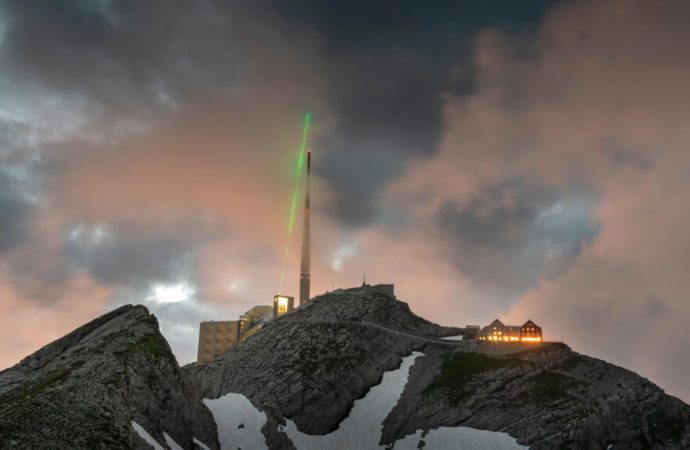Introduction: Meet the Lightning Maverick In the world of harnessing nature’s elemental forces, few names stand as tall as Dr. Eliza Thornwood. With a Ph.D. in Atmospheric Physics from Ivyridge University and over two decades of groundbreaking research, Dr. Thornwood has become the trailblazer in redirecting lightning using powerful lasers. Her pioneering work has not
Introduction: Meet the Lightning Maverick
In the world of harnessing nature’s elemental forces, few names stand as tall as Dr. Eliza Thornwood. With a Ph.D. in Atmospheric Physics from Ivyridge University and over two decades of groundbreaking research, Dr. Thornwood has become the trailblazer in redirecting lightning using powerful lasers. Her pioneering work has not only expanded our understanding of atmospheric phenomena but also opened doors to innovative methods of controlling lightning strikes.
Understanding Lightning’s Might
Before we delve into the remarkable world of redirecting lightning, it’s crucial to comprehend the sheer might and destructive potential of this natural phenomenon. Lightning, a rapid discharge of electrical energy in the atmosphere, can unleash energies of up to a billion volts and temperatures hotter than the surface of the sun. The havoc wreaked by lightning strikes on both lives and property is substantial, making the quest for effective redirection methods all the more urgent.

Image by: https://www.foxweather.com/earth-space/lightning-control-lasers
The Birth of a Breakthrough: Laser-Guided Redirection
Here’s where the genius of Dr. Thornwood and her team comes into play. By merging principles of laser technology and atmospheric physics, they’ve pioneered a game-changing method to redirect lightning strikes. The process involves using high-energy lasers to create a path of ionized air, essentially forming a ‘plasma channel’ that lightning can follow. This redirection not only averts potentially catastrophic strikes but also guides lightning to a safer, controlled location, reducing its impact on vulnerable areas.
Laser vs. Lightning: A Technical Showdown
| Aspect | Laser Redirection | Traditional Methods |
|---|---|---|
| Precision | Pinpoint accuracy in redirection. | Less accuracy, often with unintended side effects. |
| Speed | Split-second reaction time. | Delayed response, minimal control. |
| Environmental Impact | Minimal disturbance to ecosystems. | Disruption to local habitats and ecosystems. |
| Effectiveness | High success rate in diverting lightning. | Inconsistent results, varying with conditions. |
| Flexibility | Adaptable for different landscapes. | Limited applicability based on terrain. |
The Road Ahead: Benefits and Challenges
While the laser-guided redirection of lightning holds immense promise, it’s essential to acknowledge both its benefits and challenges. On one hand, the technology boasts remarkable precision, rapid response, and minimal environmental impact. On the other, the initial setup costs, technical expertise required, and potential regulatory hurdles pose significant challenges to widespread adoption.
Joining the Quest for a Safer Tomorrow
For the seekers of innovation and progress, keeping abreast of Dr. Thornwood’s groundbreaking research is a must. As lightning-related incidents become more frequent due to changing climatic conditions, the need for innovative solutions intensifies. By staying informed about the latest breakthroughs in redirecting lightning, you become a part of the movement to mitigate the risks associated with these powerful natural phenomena.
Conclusion: Lightning’s New Narrative
Dr. Eliza Thornwood’s journey into redirecting lightning strikes using powerful lasers has rewritten the narrative of our battle against nature’s fury. Her work exemplifies the beauty of merging cutting-edge technology with the deep-rooted principles of science. As we stand on the precipice of a new era in lightning control, let us be inspired by the brilliance of human ingenuity and our relentless pursuit of a safer, more secure world.























Leave a Comment
Your email address will not be published. Required fields are marked with *